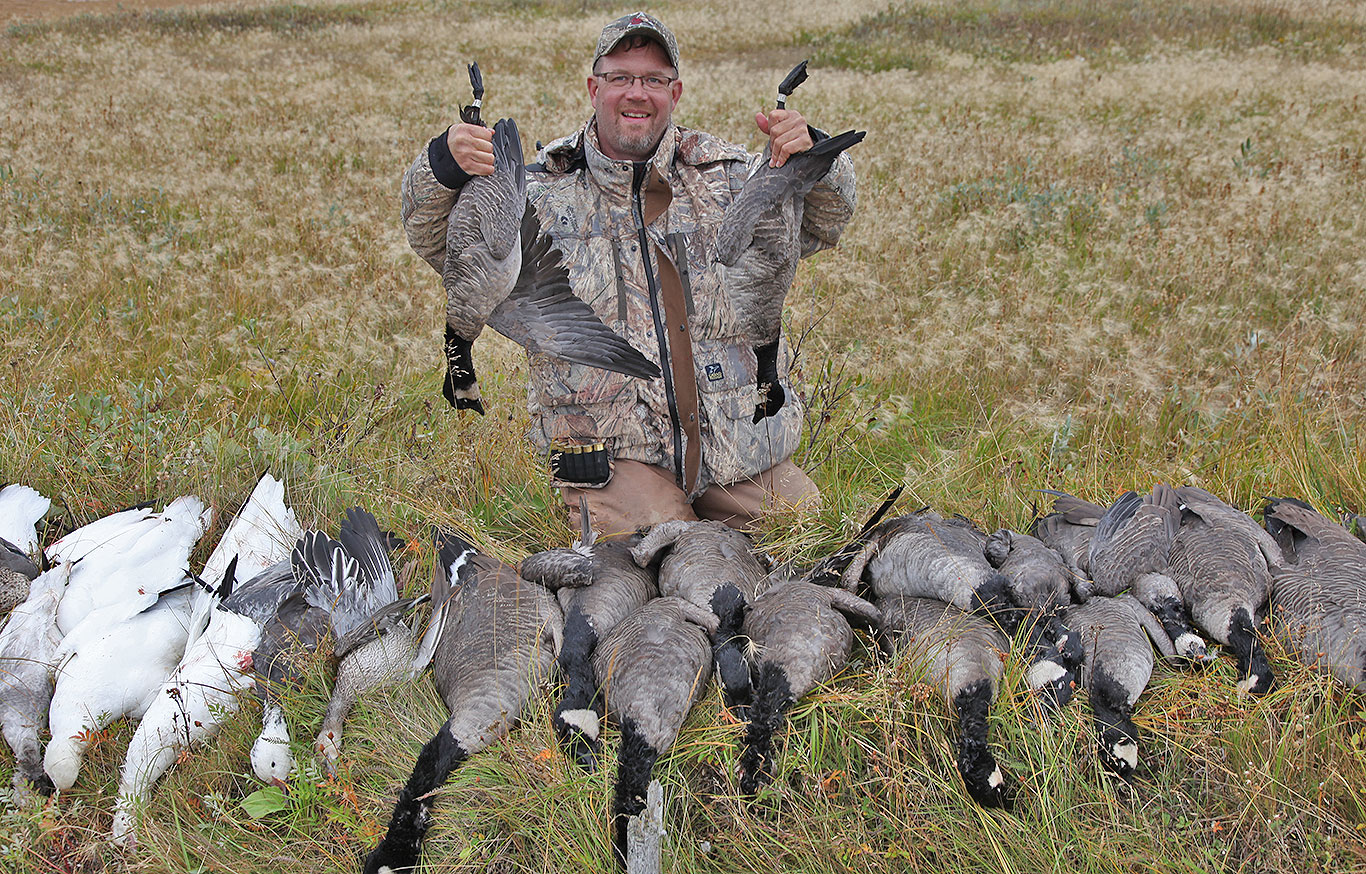
Sitting atop the Central and Mississippi Flyways, Manitoba offers an incredible mixed bag of opportunities to hunt ducks and geese, and is home to some legendary locations in the literature and history of the waterfowling pastime.
Among the most famous is Delta Marsh, a productive wetland extending more than 18 miles along the shore of Lake Manitoba and sprawling close to 3 miles at its widest point. The marsh consists of a network of interconnected shallow bays separated from Lake Manitoba’s south shore by a wooded peninsula. It is a bucket list destination for avid waterfowlers looking for diversity and a little taste of history.
While Delta Marsh might be the most famous of Manitoba’s well-known hunting hotspots, there are a number of other great locations worth a visit from waterfowlers. Oak Hammock Marsh, home of the Ducks Unlimited Canada headquarters, covers close to eight square miles, with managed conservation and hunting areas that is much larger. The Minnedosa pothole region is famous for its abundant flocks of mallards and pintail, and as a home to incredible breeding populations of canvasback. And, you should see the migration of snow geese passing through the same corridor. Some of the biggest sub-species of Canada geese come from the southern agricultural areas of Manitoba, and the hardwood lined creeks and rivers in the south produce incredible numbers of wood ducks.
All these regions get most of the press when it comes to duck and goose hunting in Manitoba, but the northern reaches of the province offer some of the most unique and awe-inspiring waterfowling a smoothbore enthusiast can encounter.

The Hudson Bay lowlands, some of the rawest wilderness a hunter may likely ever encounter, start 650 miles north of Winnipeg. The region is home to polar bears, moose, caribou, and willow ptarmigan. In early fall, thousands of geese stage along the productive tidal areas of Hudson Bay, following the tidal push of the Arctic Ocean to feed on the protein-rich vegetation. Even the giant Canada geese from southern Manitoba use the area to relax and fatten up before they hit breeding age. The area is a traditional staging area for waterfowl coming off the northern arctic islands and extensive nesting grounds along the coastline.
Historically, the Cree First Nation used the area to harvest waterfowl. They would voice call to geese, and use harvested birds as decoys, with their spread growing during a day’s hunt. There are a handful of outfitters taking advantage of the unique resources and have found ways to get hunters to the remote area.
Kaska Goose Lodge has operated along the Kaskattama River for many years, hunting out of traditional driftwood blinds, or venturing into uncharted territory. For the adventure seeker, they have a…





